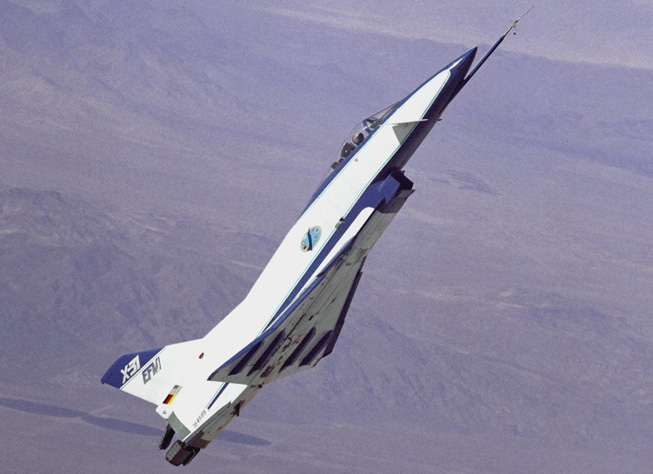The X-31 experimental aircraft was designed and built by Rockwell and Messerschmitt-Bölkow-Blohm (MBB), as part of a joint U.S. and German Enhanced Fighter Maneuverability program to improve pilots’ abilities to control the aircraft’s pitch and yaw with more finesse than was possible in most conventional fighters. One outcome was the ability, with the help of design elements such as thrust vectoring, to execute controlled flight at extreme angles of attack at which conventional aircraft would stall or lose control.
DARPA joined the cause by sponsoring tests of the X-31. During a test on November 6, 1992, one of the two X-31s that were built in the program, achieved controlled flight at a 70° angle of attack. On April 29, 1993, the second X-31 successfully executed a swift, minimum-radius, 180° turn using a post-stall maneuver, a maneuver well beyond the ability of conventional aircraft. Of the two aircraft, one survived to the conclusion of the X-31 program in June 1995. That aircraft underwent further research at the U.S. Navy Test Pilot School at Patuxent River Naval Air Station in Maryland. Its ultimate destination was Germany where it remains on display at the Deutsches Museum Flugwerft Schleissheim.
